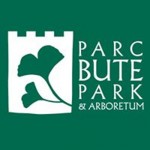|
About
Bute Park offers an extensive area of mature parkland within Cardiff’s city centre boasting a nationally-significant tree collection, numerous natural play features for the young (or young-at-heart), an education centre, three cafes, and a wealth of horticulture and wildlife interest.
There is plenty to do in the park and you can pick up a variety of self-led trails to guide you on certain activities and topics. Situated beyond Cardiff Castle just a short walk from the city’s main high streets and civic centre, Bute Park really is the “green heart of the city”. Full of historic and wildlife interest, at 56 hectares (equivalent to 75 football pitches) it is one of the largest urban parks in Wales and comprises a broad mix of historic landscape, urban woodland, sports pitches, arboretum, horticultural features and river corridor.
Over the centuries the land we know as Bute Park has gone through many changes. Attracted by the river and the castle, people have settled here, and their activities have shaped the landscape. From agriculture and industry, to a private estate with pleasure gardens, to a public park fit for a modern city; Bute Park reflects the history of Cardiff’s development. The park is rich in history with a number of important heritage features to visit. Cardiff Castle, the famous Animal Wall, Gorsedd Stones, Mill Leat, site of Blackfriars Friary, the Dock Feeder Canal and West Lodge are just a sample of the park’s rich history. Bute Park got its name in 1948 in honour of the 5th Marquess of Bute who had gifted the castle and its grounds to the people of Cardiff a year earlier. Additional land was purchased from the Bute Estate to form the area we now know as Bute Park.
The park is famous for its arboretum collections and there are over 3,000 individually catalogued tree species in the park. The site is very proud to hold the honour of having by far the greatest number of “champion trees” in any UK public park. Champion trees are recognised as the tallest or broadest examples of their species anywhere in the British Isles. There is also lots of wildlife to discover, with highlight species including colourful insects and fungi, woodpeckers, herons, numerous small bird species and, if you’re lucky, even otters! The park is grade 1 listed on Cadw’s register of parks and gardens of special historic interest.
The southern part of the site was designed by notable 19th century landscape architect Andrew Pettigrew. Pettigrew was employed by the Bute’s to provide grounds to compliment William Burges’ Gothic-inspired creations at Cardiff Castle. There is so much to discover here, why not take a look at the interactive map on our website to get you started.
History
The history of the site goes back hundreds of years, and over the centuries the land went through many changes. People were drawn to the area by the river and the castle, and their activities have shaped the landscape.
From agriculture and industry, to a private estate with pleasure gardens, to a public park fit for a modern city; Bute Park reflects the history of Cardiff’s development. Further development activity over many years has resulted in a range of heritage and visitor attractions.
The Park before Bute – From the 1100s the land we know today as Bute Park was made up of a patchwork of different uses and ownerships. The land was dominated by the castle and the river and was used for agriculture, cottage industries and religion. These activities reflected Cardiff’s main trades at the time and its importance as a religious centre.
Putting the ‘Bute’ into Bute Park – In 1766, wealthy landowners, the Bute family inherited the castle and by the late 1800s had begun to develop the grounds. The land surrounding the castle was brought together and pleasure gardens were created. Andrew Pettigrew worked closely with architect William Burgess to create a landscape that complemented the ornate work on the castle. The development of the estate reflected the new found wealth and ambition which was emerging in Cardiff at the time.
A Park for the People – In 1947 the Fifth Marquess of Bute gifted the Castle and grounds to the people of Cardiff and the land was turned in to a public park. Today the land is the ‘green heart’ of the city and provides a habitat for wildlife as well as a venue for major public events.
|

 PAGE Q.R. CODE
PAGE Q.R. CODE
 PAGE Q.R. CODE
PAGE Q.R. CODE